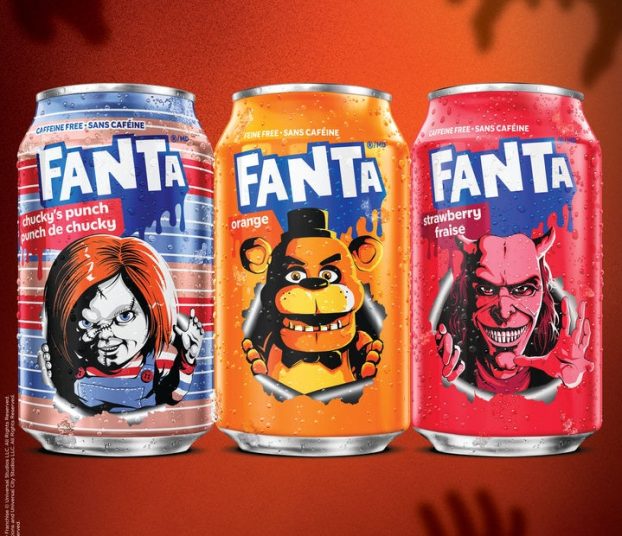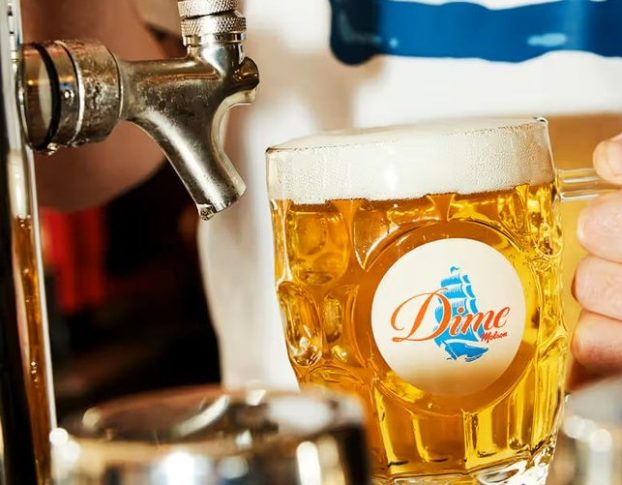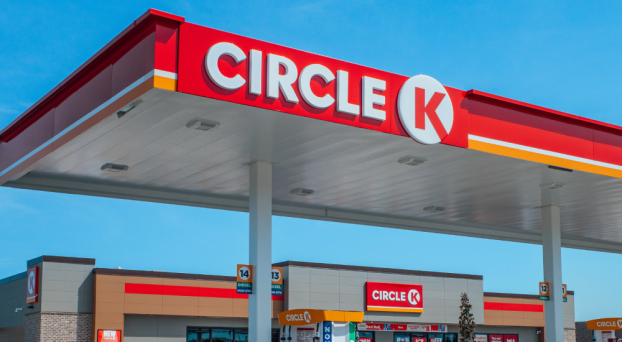Thirty-eight years ago, a college kid named John Betts was putting ketchup on buns behind the counter at a McDonald’s in Southhampton, NY. After graduating from Long Island University, instead of going out to get a ‘real job,’ as he puts it, he stayed on at the QSR, working his way up the ranks in the U.S. until moving north last year for his current position – president of McDonald’s Canada.
Chief marketing officer Brian O’Mara followed a similar path, starting out on the grill as a student 20 years ago. With so many years of experience between them, they’ve seen McDonald’s evolve from a fast food fun house to (what they hope will be) a more sophisticated dining experience.
The first Canadian McDonald’s opened in Richmond, B.C., in 1967, followed the next year by the first Eastern location in London, ON., by famous licensee George Cohon (who was chairman, president and CEO from 1971 to 1992). The chain grew steadily over the next few decades, and today there are more than 1,400 McDonald’s with 77,000 employees in Canada – just a small fraction of the over 31,000 restaurants in 119 countries around the world.
While the current global tagline is ‘I’m lovin’ it’ (introduced in 2003), there’s no denying that McDonald’s has faced its fair share of negative press in the past (having been the subject of lawsuits, documentaries, protestors, etc.). However, Betts and O’Mara are unwavering in their devotion to the company and their belief in its offering, noting recent attempts to be more transparent about what goes into the food.
‘It’s meat, potatoes, salad, yogurt, fresh eggs,’ says Betts. ‘We did that ad [showing employees cracking eggs], and actually had people say, ‘we didn’t know you used real eggs.’ How do they think an Egg McMuffin gets that shape? Do they think it’s manufactured in a factory? But it’s just because we’re so big and we haven’t taken the time to tell our quality story. I’ve been eating the food for 38 years and if you tie it into an active, balanced lifestyle, it’s good for you.’
Telling their ‘quality story’ is just one way that the QSR is revamping its image. It’s upgrading restaurants to be more inviting and has recently taken on the café crowd by offering premium coffee – making major waves this summer when it gave free coffee to cash-strapped consumers, resulting in a plethora of media stories and nervousness among the $5 latte distributors. McDonald’s is currently testing the McCafé line of products (which is available in the U.S. and includes cappuccinos and lattes) in 70 locations in Atlantic Canada to determine whether or not to roll them out in the rest of the country.
Getting a little more creative with their menu has led to getting a little more creative with their advertising, which all originates in Canada for this market. In the last few months, AOR Cossette has produced stand-out OOH such as giant (literally) steaming cups of coffee in major cities, some billboards with salad ingredients bursting into the sky and others held up by huge Greek columns to promote the new Mediterranean menu items.
Television spots have also experienced a makeover, with a more contemporary, urban feel, such as ads featuring exhausted dads taking a much-deserved break, a young professional brokering deals while enjoying his coffee and Egg McMuffin and an office assistant dutifully taking down an email about a Snack Wrap from his boss.
It’s all been brought to life with a core marketing team of 15, as well as regional marketers in Vancouver, Toronto and Montreal, where French-language advertising specifically created for the Quebec market originates. The team works with Cossette as well as OMD for media, The Marketing Store for promotions and Watt for merchandise design.
Renovating stores, beefing up the menu and embarking on big ad campaigns makes sense for a business that seems to thrive in a recession. Global sales rose by 4.8% in the last reported quarter, with McDonald’s Canada bringing in $2.91 billion.
We asked Betts and O’Mara about the changes we’ve seen, what they’ll be doing leading up to the 2010 Olympics and how they’re staying on top of the QSR game.
How has the economic climate affected your business?
Betts: It hasn’t really impacted us badly at all. We had a very strong business plan put in place: it’s called the ‘Plan to Win,’ and it’s a very consumer-centric plan. It’s focused on meeting [their] needs. Our plan was built around things like breakfast value, product offerings, broadening our menu, being open when [consumers] want us to be open, refreshing, re-imaging our restaurants and improving the experience. All those things were in place before the world changed in that fourth quarter of last year. Our business was growing significantly before the fourth quarter started, and it’s continued to grow since.
O’Mara: Value is a big part of our DNA. So during recessionary times, does that play into our sweet spot and into our favour a little bit? Sure. We’re fortunate to be one of those brands that has a tendency to ride the economic times pretty well.
In your recent ads there’s a more contemporary, urban tone, was that a conscious decision?
Betts: Absolutely. Being more relevant, connecting better with customers and being more contemporary is what the ‘I’m lovin’ it’ spirit is all about. Since the Plan to Win began, we’ve been doing a lot to be more relevant, to be a ‘forever young’ brand and to demonstrate to consumers that we understand them and we’re trying to ramp up our offering.
McDonald’s seems to have such a wide reach, who is your key target?
O’Mara: We’re an inclusive brand; we’ve got such a broad customer base that we try always to have as much broad appeal as we possibly can. If you were to describe our base targets it would be more young adults and families. So from a young adult perspective, we’re doing things across the breadth of the business plan to appeal to them, whether it’s more accessible hours of operations or the Value Picks program, and our Snack Wrap lineup really has high appeal for young adults. Fresh, contemporary dining rooms that are a little bit more sophisticated – all those things play to young adults in a pretty big way.
How has your approach to reaching kids changed over the years?
O’Mara: We’ve been very responsible about the way we talk to kids. We made a pledge in February 2008 about how we’re going to market the Happy Meal bundle as responsibly as we possibly can. In all Happy Meal ads since then, we feature the healthiest possible options, so we talk about white meat nuggets, milk and apple dippers in the advertising. Obviously we can’t advertise to kids in Quebec. But quite a bit of our effort is really family-oriented and talking to moms as well.
Betts: The Mom’s Quality Correspondence is one of the ideas that we stole shamelessly from another market. Richard Ellis, our senior VP of communications put together a program where we have five moms from across Canada who we are [showing] everything about us. So they’ve been to our beef plant, they’ve been to where the chickens are prepared for production, they had an opportunity to go to Chicago and see the world headquarters. They see everything about us; it’s totally transparent, and they write a blog [at Mcdonaldsmoms.ca] and communicate to the world.
It’s about trying to talk about some of these things that may be myths, maybe folks just don’t know or understand, and they give us their feedback. It’s been refreshing.
McDonald’s hosted a fashion event in Yonge-Dundas Square in Toronto to promote the new salads to women. What was the strategy and what were the results?
O’Mara: Fashion and salads are two things that women have a lot of passion for. In fact our research showed that many women would rather buy a dress and eat a great salad than go out on a date.
As primary salad eaters, we wanted to develop a line of impressive salads that women would view differently from our regular menu items. What better way than to stage an event just for women where they could indulge in their two favourite passions: fashion and salad eating.
There haven’t been too many hot and sunny days in Toronto this year, but our Summer Style luncheon – during which more than 650 people got to sample a full-sized entrée salad of their choice – kicked off the season in style. [Attendees] were treated to fashion tips from leading experts on dressing and accessorizing for the summer.
Are women an elusive demo for you?
O’Mara: It’s not really an elusive target. Believe it or not when we do user studies across Big Macs and Quarter Pounders with Cheese, it’s actually a 50/50 split – women eat a lot of burgers. But we have all kinds of other choices. I think consumers in Canada eat as many as three salads a week in the summertime so it’s part of just understanding what consumers want and then fill the need.
Natural, ‘from the earth’ items seem to be a big trend these days. How have you been responding?
O’Mara: We’ve got a great story to tell and we’re telling it a little smarter than we have in the past. We have a saying at McDonald’s that ‘when we tell our story we win.’ Our premium roast coffee is a great example; it’s 100% Arabica beans, freshly picked, fire-roasted, and we just weren’t really telling that story to consumers. [So we] came out with, ‘hey, tasting is believing, so why not do something really fun and engaging for the customer?’ And that led us to the national sampling effort.
How did consumers react to the free coffee promotion?
Betts: In the last couple of years we made a lot of changes to our coffee; we standardized the equipment from coast to coast, we changed our procedures in terms of training employees and we introduced the new coffee cup with new lid. It is a great cup of coffee and yet not enough people knew it. And one of the biggest pieces of feedback from our sampling was folks said, ‘We didn’t know your coffee was this good.’
There are a couple of other competitors in Canada that sell a lot of coffee and I think that today folks think about us a lot more – we’re further into the forefront of the mind when it comes to coffee.
Of course coffee is the lead-in to breakfast, so it’s really about the overall breakfast. Folks come in for a free cup of coffee and they see all the great offerings we have, they remember, ‘oh yeah, that’s the Egg McMuffin.’ The fresh baked muffin and coffee for $1.39 – no one in Canada can touch that offer.
And we’ve been absolutely thrilled with the response. One of the best parts about it was our owner-operators from coast to coast, every one of them said, ‘Let’s do this, let’s re-introduce ourselves.’ I believe we called it ‘Let’s start fresh.’ It was about starting a new relationship. The crew and the managers were absolutely thrilled, and we gave away millions of cups of coffee. It was very big for us.
McDonald’s is a sponsor of the 2010 Olympic Games in Vancouver. What are you doing to promote that?
O’Mara: We [started] in August with a sports bottle offering commemorating the Vancouver Games and our stable of Olympic athletes that we work with, so a Patrick Chan bottle, a Cindy Klassen bottle, one signed by Crispin Lipscomb and Brad Martin, our great snowboarders. Then we’ve got hockey and an alpine design, so we think these are going to be great back-to-school gifts and plays into folks’ active, healthy lifestyles.
Our Olympic activation platform is to tell the great employment story that we have and it’s a best-kept secret. We’ve been feeding Olympic athletes for decades at the Winter and Summer Games, so we’re going to tell the story about sending our best crew people and managers from across Canada to Vancouver to serve the Olympic athletes in our food venues in the Olympic villages.
Some may not associate McDonald’s food with athletes. How do you deal with that through your communications?
O’Mara: That’s easy. You have arguably the top athletes in the world training for the Winter Games coming up, and McDonald’s is part of their diets. It’s fun because, like in Beijing, we know that athletes have trained their entire lives to be on that stage, to go for the gold, and two or three hours before that moment in their life they’re eating McDonald’s food. And consumers just don’t understand that, so it’s part of the story that we’re going to tell.
What’s coming up in terms of expansion or changes to the restaurants?
Betts: Our current CEO Jim Skinner a few years back set us on the course of being better, not necessarily bigger. It’s really been in play for five or six years, making sure that the restaurant facilities are up to date. We call it ‘re-imaging,’ so a re-imaged restaurant is changing the dining area, making it much more contemporary, much more comfortable and soft. You’ve probably seen some of the restaurants with the fireplaces and the large plasma TVs and the softer music and the remodelled restrooms. It’s to take a step away from the old fast food world [of] plastics, to a much more comfortable and inviting ambiance. We’re doing that to a couple hundred restaurants this year and we’re going to continue that pace for the next several years. That’s where we’re investing a lot of our dollars [$150,000 to $1.5 million per project].
[We’re also] fixing our drive-thrus. We have a concept where we have drive-thrus right next to each other so we can get more customers through to improve the accuracy of orders and the speed of service. We’ll be building a few new restaurants and locations but that’s not the primary focus; it’s about making the experience that much better.
Do you think being environmentally responsible is more expected today?
Betts: The environment and social responsibility are more important today than any time during my career. And I think this time it’s here to stay. Here in Canada we’ve been doing a great job. We opened a restaurant in Beauport, QC. [that is a candidate for LEED (Leadership in Energy and Environmental Design) certification] last year. It’s our first [green] restaurant, so it’s going to give us an opportunity to experiment in that area.
Our supply chain has done a great job in terms of making sure we use recycled materials and that the weight of the materials is less so that we’re saving hundreds of thousands of trees. We have energy initiatives that have reduced the amount of gas and electricity that we use very successfully [saving an estimated 11.7 million kWh and 770,000 cubic metres of natural gas since 2005]. And not only is it good environmentally, it’s also good for business – we spend less, we get the same experience to our customers. It’s a win-win for everybody.
What are your top goals for the coming year?
Betts: We call it ‘beating yesterday.’ Whatever we did last year, we want to beat that this coming year. So it’s not a very glamorous answer – we didn’t get to be successful by trying to find the silver bullets along the way. We’re a system that engages our operators, our employees, our suppliers in doing everything we can to meet the needs of the customer. We had a great year last year; we’re going to have an awesome year this year. And I don’t see things slowing down for us.
O’Mara: Our brand is stronger than ever here in Canada. McDonald’s is at its best when we go after more customers and not the competition.





















